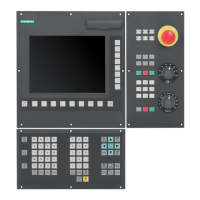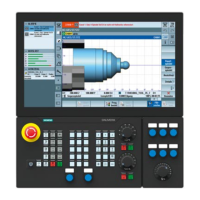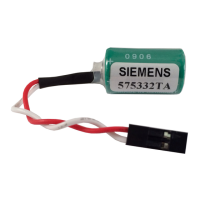File and Program Management
3.4 Protection levels for user data, MD, SD and NC commands
Job planning
3-14 Programming Manual, 03/2006 Edition, 6FC5398-2BP10-1BA0
3.4.2 Automatic activation of GUDs and MACs
Function
Definition files for GUD and macro definitions for HMI Advanced are edited in the Services
operating area.
If a definition file is edited in the NC, when exiting the Editor you are prompted whether the
definitions are to be set active.
Unloading the GUD and macro definitions
If a definition file is unloaded, the associated data block is deleted after a query is displayed.
Loading the GUD and macro definitions
If a definition file is loaded, a prompt is displayed asking whether to activate the file or retain
the data. If you do not activate, the file is not loaded.
If the cursor is positioned on a loaded definition file, the soft key labeling changes from
"Load" to "Activate" to activate the definitions. If you select "Activate", another prompt is
displayed asking whether you want to retain the data.
Data is only saved for variable definition files, not for macros.
Note
HMI Advanced
If there is not enough memory capacity to activate the definition file, once the memory size
has been changed, the file must be transferred from the NC to the PCU and back to the NC
again for activation.
Example: prompt on exiting the editor
"Do you want to activate the definitions from file GUD7.DEF?"
"OK": A prompt appears that asks whether you want the save the currently active data.
"Do you want to keep the previous data of the definitions?"
OK": The GUD modules of the definition file to be edited will be saved, the
new definitions will be activated and the saved data will be reloaded.
"Abort": The new definitions will be activated; the old data will be lost.
"Abort": The changes in the definition file will be rejected; the associated data
block is not changed.

